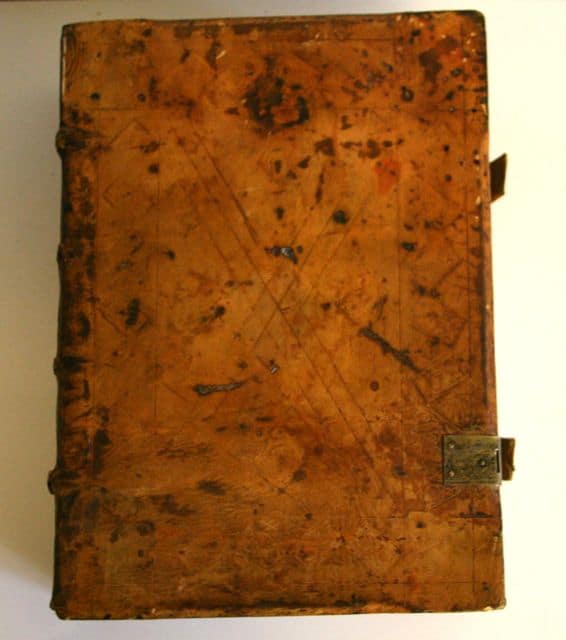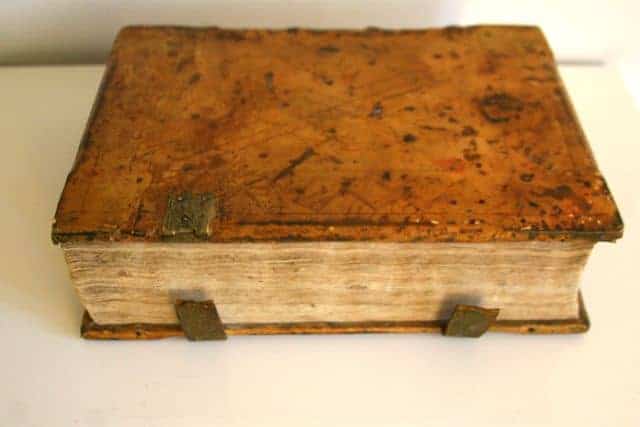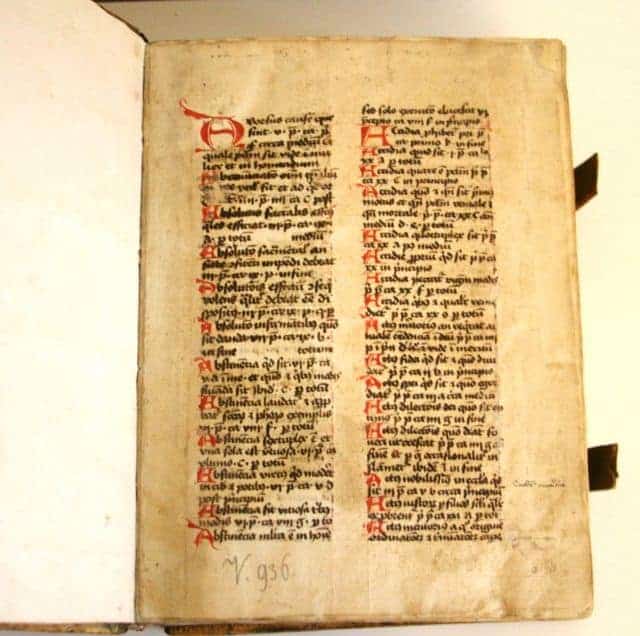December 13, 2009
PRINTED 1470-1472: SORCERY AND THE ORIGINS OF THE WITCHCRAFT CRAZE
A HUMANIST COPY OF ONE OF THE 15th CENTURY’S MOST IMPORTANT WORKS
ONE OF THE EARLIEST OBTAINABLE INCUNABLES
Nider, Johannes, ca. 1380-1438. Praeceptorium divinae legis, sive, Expositio decalogi]. (Basel : Berthold Ruppel, ca. 1470-1472) Folio. 30 x 21.5 cm., 330 leaves (i.e. 660 pages) ff. 1,24, 25 in contemporary manuscript. 37-38 lines and headline, double column, Gothic type, Rubricated in red throughout. Handsome contemporary blind stamped deerskin with remainder of two engraved clasps, spine relaid many years ago, contemporary vellum manuscript bookseller’s waste and inscribed paper fragments used as pastedowns. f. 1 rebacked, f.2 with old ex-libris markings, small holes to ff. 1-4 and 19, some leaves repaired, light staining to gutter of preliminary leaves. Likely evidence of a late 15th century humanist owner with a manuscript except of Juvenal on the rear board pastedown; Juvenal being commonly taught in humanist schools: ” Malo tibi pater sit Thermites, dummodo tu sis .Xacida:, similem, Vulcaniaque arrna capessas, Quam te Thersita? similem producat Achilles.” Goff N-196; BMC III 715. A VERY ATTRACTIVE, WIDE-MARGINED COPY OF A RARE, DESIRABLE, AND VERY EARLY INCUNABLE [$16,500]
Like the Formicarus, this seminal work by Nider elucidates the origins of the witchcraft craze and persecutions by helping to lay theological foundations, recording the names of those who had contravened the first commandment of God with unusual rituals and superstitious beliefs and acts. He discusses women who “boasted of having seen the souls in purgatory and of many other fantasies” as well as those who were not affected by the flames of a candle upon their skin. Theological debates and questions run throughout the work on the devil, poltergeists, noctural disturbances, imaginary fires and other malefici [Ref: Lea, Henry Charles Materials Toward a History of Witchcraft Part 1, 1890, reprinted 2004 ]
This book was for many years considered to be a 1464 imprint and thus the first book printed in Switzerland, based on a rubricator’s inscription dated Oct. 20 1464 in another copy. However, this rubricator’s date was later shown to be inaccurate and the date of 1470-1472 is now generally assigned. Regarding the date, the Woldcat-compiled cataloguer’s notes state: “F. Finkenstaedt, in Beiträge zu Forschung, neue Folge 4 (München, 1932) pp.7-33, although wrongly accepting a rubricator’s date of 1464 as genuine, showed that this edition served as exemplar for Zel’s first edition (Goff N-207), of which a copy is known with an acquisition note of 1472 (cf. also V. Scholderer, in The Library V, 3 (1948/49) p.50 and K. Ohly in ZfB 57 (1940) pp.247-60). BMC dated not after 1474, and Goff about 1470.”




